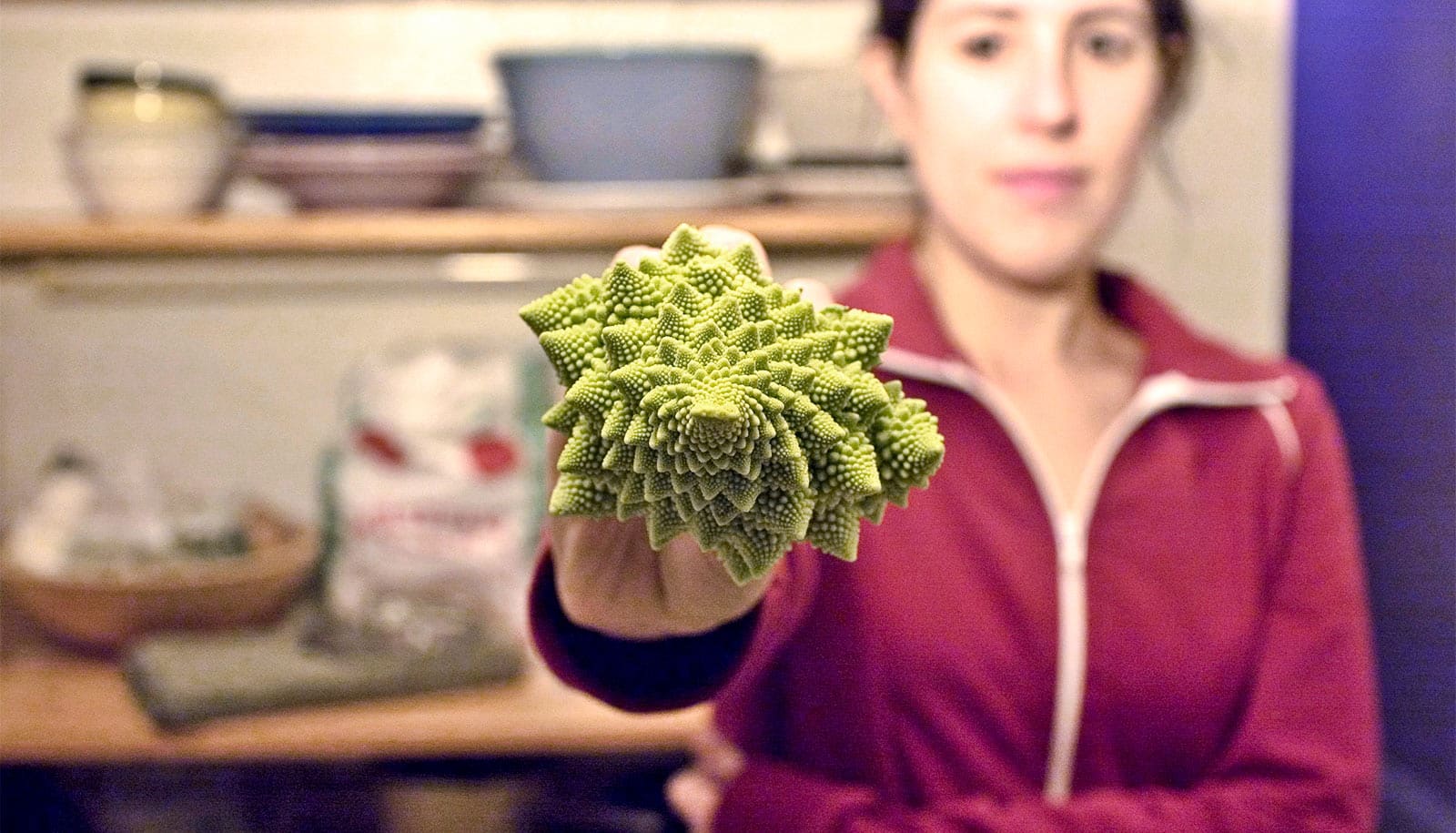By the time children are three years old, they already have an adult-like preference for the visual fractal patterns common in nature, report researchers.
That discovery emerged among children who’ve been raised in a world of Euclidean geometry, such as houses with rooms constructed with straight lines in a simple non-repeating manner, says the study’s lead author Kelly E. Robles, a doctoral student in the University of Oregon’s psychology department.
“Unlike early humans who lived outside on savannas, modern-day humans spend the majority of their early lives inside these manmade structures,” Robles says. “So, since children are not heavily exposed to these natural low-to-moderate complexity fractal patterns, this preference must come from something earlier in development or perhaps are innate.”
The study appears in the journal Humanities and Social Sciences Communication. In it, researchers explored how individual differences in processing styles may account for trends in fractal fluency. Previous research had suggested that a preference for fractal patterns may develop as a result of environmental and developmental factors acquired across a person’s lifespan.
In the study, researchers exposed participants—82 adults, ages 18-33, and 96 children, ages 3-10—to images of fractal patterns, exact and statistical, ranging in complexity on computer screens.
Exact fractals are highly ordered such that the same basic pattern repeats exactly at every scale and may possess spatial symmetry such as that seen in snowflakes. Statistical fractals, in contrast, repeat in a similar but not exact fashion across scale and do not possess spatial symmetry as seen in coastlines, clouds, mountains, rivers, and trees. Both forms appear in art across many cultures.
When viewing the fractal patterns, Robles says, subjects chose favorites between different pairs of images that differed in complexity. When looking at exact fractal patterns, selections involved different pairs of snowflake-like or tree-branch-like images. For the statistical fractals, selections involved choosing between pairs of cloud-like images.
“Since people prefer a balance of simplicity and complexity, we were looking to confirm that people preferred low-to-moderate complexity in statistically repeating patterns, and that the presence of order in exact repeating patterns allowed for a tolerance of and preference for more complex patterns,” she says.
Although there were some differences in the preferences of adults and children, the overall trend was similar. Exact patterns with greater complexity were more preferred, while preference for statistical patterns peaked at low-moderate complexity and then decreases with additional complexity.
In subsequent steps with the participants, the research team was able to rule out the possibility that age-related perceptual strategies or biases may have driven different preferences for statistical and exact patterns.
“We found that people prefer the most common natural pattern, the statistical fractal patterns of low-moderate complexity, and that this preference does not stem from or vary across decades of exposure to nature or to individual differences in how we process images,” Robles says. “Our preferences for fractals are set before our third birthdays, suggesting that our visual system is tuned to better process these patterns that are highly prevalent in nature.”
Source: University of Oregon


